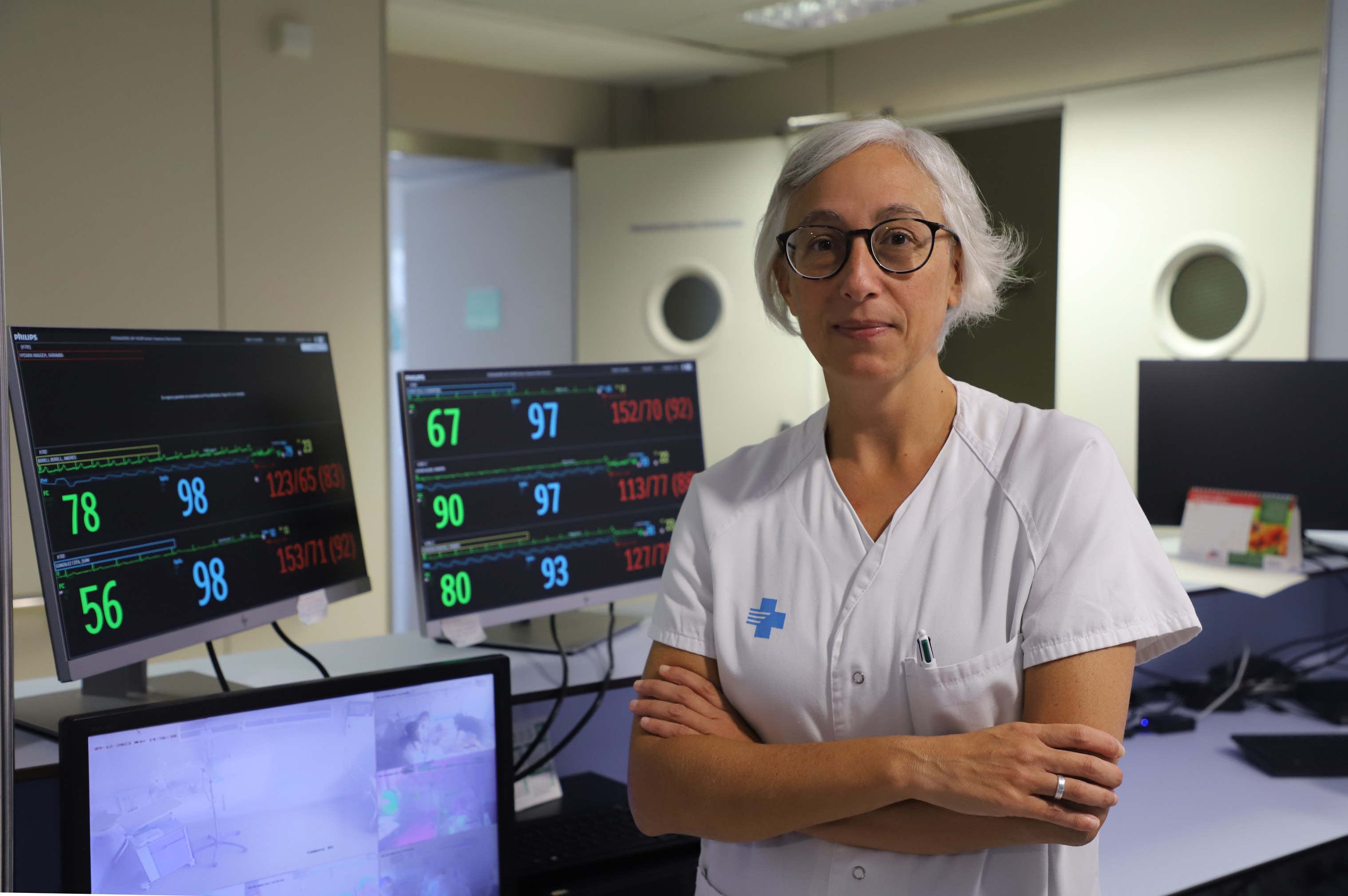Taking patients with haemorrhagic stroke to the nearest centre improves their prognosis

- A study co-led by researchers from the Germans Trias i Pujol Research Institute (IGTP), the Research Institute of the Hospital de la Santa Creu i Sant Pau - IIB Sant Pau and the University Hospital Dr. Josep Trueta-IDIBGI of Girona, concludes that direct transport to a referral centre for endovascular treatment may not be the best option for patients with a final diagnosis of intracerebral haemorrhage or haemorrhagic stroke.
- This finding could be useful for improving current pre-hospital transport protocols in stroke cases.
- This is a RACECAT secondary study published in JAMA Neurology that focuses on intracerebral haemorrhages. This type of stroke is the least common, accounting for 15-20% of cases, and tends to have a more severe prognosis.
Direct transport to a referral centre for endovascular treatment may not be the best option for patients with a final diagnosis of intracerebral haemorrhage or haemorrhagic stroke, according to the results of a study published in the journal JAMA Neurology. The research, which is part of a secondary analysis of the RACECAT study, was led by researchers from the Germans Trias i Pujol Research Institute (IGTP), the Research Institute of the Hospital de la Santa Creu i Sant Pau - IIB Sant Pau and the University Hospital Dr. Josep Trueta - IDIBGI of Girona.
The results of this study have been accompanied by the publication of an editorial in this prestigious scientific journal, emphasizing the need to re-evaluate stroke patient triage and transfer protocols based on the type of stroke, symptom severity and location. It suggests that, in patients with a subtype of haemorrhagic stroke, timely stabilisation of patients in the nearest care centre, followed by transfer to more specialised treatment centres, may be an effective strategy to improve health outcomes.
RACECAT, a landmark clinical trial
The RACECAT study was conducted in Catalonia between March 2017 and June 2020 with the participation of all stroke receiving hospitals and the Medical Emergencies System (SEM). It analysed more than a thousand patients with severe stroke and evaluated two approaches: sending them directly to hospitals with the capacity to perform endovascular treatments or sending them to the nearest hospital, with a possible subsequent transfer if a thrombectomy is necessary. The project was led by researchers from the IGTP, Vall d'Hebron Research Institute (VHIR), and the neurology services of the Germans Trias i Pujol (HUGTiP) and Vall d'Hebron hospitals.
Dr Natalia Pérez de la Ossa, co-leader of the Neurovascular Research Group at IGTP and coordinator of the Stroke Unit at HUGTiP, comments: "RACECAT has shown us that the decision to transfer a patient cannot be the same for all cases, as it depends on many factors. It is necessary to individualise the decision and find tools that allow us to distinguish the type of stroke when the patient is in the ambulance to decide the best destination. Currently, the RACE scale is used, which assesses the severity of the stroke, but we continue to do research to optimise protocols and advance treatment according to the needs of each case".
Haemorrhagic stroke
The secondary RACECAT study recently published in JAMA Neurology focuses on intracerebral haemorrhages, including the 302 haemorrhagic stroke patients included in the RACECAT study. This type of stroke is the least common, accounting for 15-20% of cases, and tends to have a more severe prognosis.
The study's first author, Dr Anna Ramos, researcher of the Cerebrovascular Diseases Group at the Research Institute of the Hospital de la Santa Creu i Sant Pau - IIB Sant Pau and assistant vascular neurologist at the Neurology Department of the same hospital, explains that "in haemorrhagic stroke, caused by the rupture of an artery that causes bleeding, there are two strategies: a simple action, such as lowering blood pressure and controlling blood sugar, or a complex action, with the transfer of the patient to centres with specialised ICUs and neurosurgeons. This second strategy sometimes involves longer transfers and, therefore, a delay in treatment. For this reason, determining the circuit to follow in haemorrhagic stroke is very important in order to know which of these two strategies is necessary and to transfer patients safely".
First-option transfer to a specialist centre under scrutiny
The study results indicate that direct transport to an endovascular treatment centre instead of the nearest local centre increases medical complications for haemorrhagic stroke patients and may have negative consequences later on. After 90 days, patients transferred directly to a referral centre for endovascular treatment showed a worse functional outcome and higher mortality rate compared to those sent to the nearest facility.
According to Dr Yolanda Silva, assistant of the Neurology Service of the Hospital Josep Trueta and researcher at the Girona Biomedical Research Institute (IDIBGI), one of the main conclusions of the study is the need to "continue to advance in the research of new methods for a more precise selection of stroke patients at source and, thus, make the most appropriate referral". Silva also highlights how this study can improve current pre-hospital transport protocols in cases of stroke: "Many of these patients experience bronchoaspirations during transport, and previous antiemetic treatment can be a positive measure".
These results provide evidence that will help improve current pre-hospital transport protocols in stroke cases, and raise questions about the effectiveness of taking patients directly to endovascular treatment centres when haemorrhagic stroke is suspected.
Reference
Ramos-Pachón A, Rodríguez-Luna D, Martí-Fábregas J, Millán M, Bustamante A, Martínez-Sánchez M, Serena J, Terceño M, Vera-Cáceres C, Camps-Renom P, Prats-Sánchez L, Rodríguez-Villatoro N, Cardona-Portela P, Urra X, Solà S, Escudero M, Salvat-Plana M, Ribó M, Abilleira S, Pérez de la Ossa N, Silva Y. Effect of Bypassing the Closest Stroke Center in Patients with Intracerebral Hemorrhage: A Secondary Analysis of the RACECAT Randomized Clinical Trial. JAMA Neurol. 2023 Aug 21. DOI: 10.1001/jamaneurol.2023.2754.
